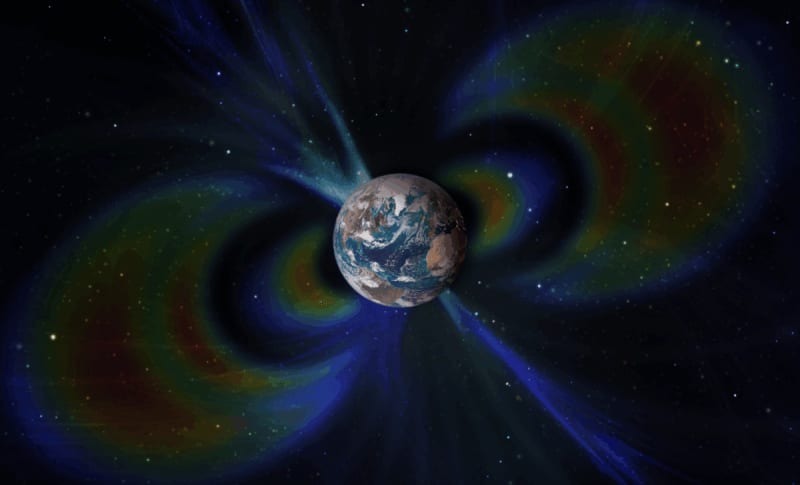
Image credit: Shutterstock | The Daily Galaxy –Great Discoveries Channel
For more than half a billion years, a giant magnetic anomaly buried in Earth’s ancient rocks has puzzled scientists. The strange data once appeared to defy the rules of geomagnetism, hinting that our planet’s magnetic field behaved chaotically during that time. Now, new research suggests the chaos may have actually followed a hidden order. A recent study in Science Advances proposes a bold new explanation that could rewrite the history of Earth’s magnetic evolution.
A New Look At Earth’s Magnetic Past
A team led by geologist David Evans from Yale University has revisited myst…

Image credit: Shutterstock | The Daily Galaxy –Great Discoveries Channel
For more than half a billion years, a giant magnetic anomaly buried in Earth’s ancient rocks has puzzled scientists. The strange data once appeared to defy the rules of geomagnetism, hinting that our planet’s magnetic field behaved chaotically during that time. Now, new research suggests the chaos may have actually followed a hidden order. A recent study in Science Advances proposes a bold new explanation that could rewrite the history of Earth’s magnetic evolution.
A New Look At Earth’s Magnetic Past
A team led by geologist David Evans from Yale University has revisited mysterious paleomagnetic signals dating back over 500 million years, during the Ediacaran Period, when complex life was just beginning to flourish. In their paper published in Science Advances, the researchers describe a revolutionary model that reinterprets what once looked like random magnetic fluctuations.
“We are proposing a new model for the Earth’s magnetic field that finds structure in its variability rather than simply dismissing it as randomly chaotic,” says geologist David Evans of Yale University.
Instead of an unstable and unpredictable geomagnetic field, the study suggests a more structured, cyclic pattern that governed Earth’s magnetic behavior through time. By applying an innovative statistical framework, Evans and his team found recurring patterns that could explain long-term field reversals and anomalies preserved in ancient rocks. These findings could reshape how scientists reconstruct the positions of continents and oceans across the planet’s deep history.

Image
Reconstructing Lost Worlds With Statistical Innovation
To decode the Ediacaran magnetic signatures, the researchers developed advanced statistical tools designed to sift through vast and complex datasets. Their goal: transform what appeared as noise into meaningful signals revealing the motion of tectonic plates and the evolution of Earth’s magnetic poles.
“We have developed a new method of statistical analysis of Ediacaran paleomagnetic data that we think will hold the key to producing robust maps of the continents and oceans from that period.”
By reanalyzing data from ancient rocks around the world, the team was able to bridge gaps between previously disconnected geological timelines. This new framework makes it possible to visualize the shifting geography of the Earth from billions of years ago to today.
“If our proposed, new statistical methods prove to be robust, we can bridge the gap between older and younger time periods to produce a consistent visualization of plate tectonics spanning billions of years, from the earliest rock record to the present day,” says Evans.
Such a consistent record could finally allow scientists to trace how the magnetic field, core dynamics, and plate tectonics interacted over geological eons, revealing how the early Earth transitioned into a stable planet capable of supporting life.

Image
Reimagining Earth’s Ancient Magnetic Landscape
The implications of this study reach far beyond academic curiosity. A clearer understanding of how the magnetic field evolved provides clues about Earth’s internal processes, from core convection to mantle circulation. These insights help scientists grasp how our planet maintained a protective magnetic shield crucial for preserving its atmosphere and habitability.
The new model may also refine how geologists align different sections of Earth’s history, correcting long-standing discrepancies between paleomagnetic data and tectonic reconstructions. As researchers continue refining the statistical approach introduced by Evans and colleagues, the vision of a unified, continuous magnetic history spanning billions of years comes closer to reality.
Enjoyed this article? Subscribe to our free newsletter for engaging stories, exclusive content, and the latest news.